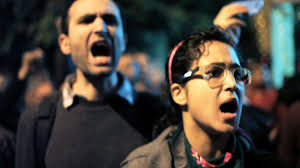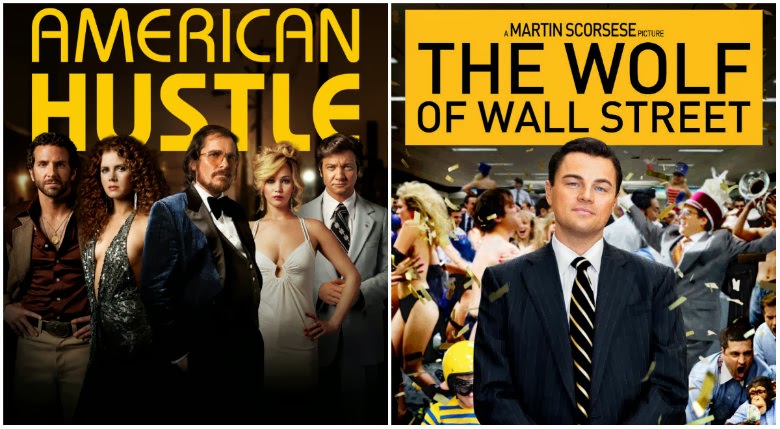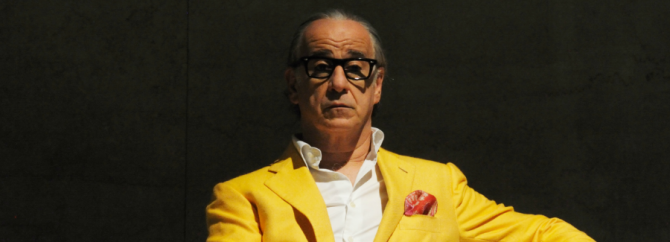Documentaries are the type of feature-length films much more likely to be directed by women: 39 percent of documentaries have women directors as opposed to 18 percent for narrative features. Perhaps not coincidentally documentaries are also some of the lowest-grossing films at the box office, the brussels sprouts of the film world–good for you, but not the first thing anyone orders off the menu.
But mainstream movies have so much asinine fakery in them, from CGI that looks as if it came off the side of a van in the 1970s to the Manic Pixie Dream Girl, audiences hunger for the real. In a time when big American news media are shutting down their offices in other countries (to save money) and more and more Americans are getting their news through the Daily Show and the Colbert Report, Jehane Noujaim’s The Square, which is nominated for an Oscar for Best Documentary and just won The Director’s Guild Award in the same category, and Luciana Kaplan’s Eufrosina’s Revolution, which was part of Hot Docs and was shown in New York’s 2014 Athena Film Festival, follow up on international current events with a thoroughness that is anathema to our amnesia-prone mainstream news media.
The Square is Noujaim’s kickstarter-funded Netflix-distributed documentary of what happened in Egypt after the popular overthrow of longtime dictator Hosni Mubarak in 2011. Noujaim, who previously directed Control Room (2004) and Startup.com (2001) has had a successful career in the US, but was born in Egypt and like a lot of people with roots there returned to the country after the massive protests in Tahrir Square.
What she finds in Tahrir is…confusing in ways which will be familiar to anyone who has taken part in large political protests, especially those that carry the possibility of police retaliation, like the Occupy protests that started later in 2011 (in part inspired by the Arab Spring). To try to make the movement coherent, Noujaim chooses to focus on individual protestors from diverse backgrounds. The documentary’s main “character” is photogenic, committed, twenty-something Ahmed, who comes from a poor family (he tells us he had to fund his own grade-school education by working as a street vendor). We also meet Khalid, a British-Egyptian movie actor (The Kite Runner, United 93 and Green Zone) who has come back to the country to join the revolution, Magdy, a member of The Muslim Brotherhood who was tortured under the Mubarak regime and Aida, a fillmmaker and actress in shocking pink, leopard-patterned, eyeglass frames who is, along with Khalid, a co-founder of a citizen journalism (including video) organization (an important component of activism all over the world). I had to look up a description for Aida, unlike the others, since we see much less of her and hear much less about her life in the film, a particularly maddening omission from a woman director.

The people who gathered in Tahrir were not only men: separate, long, security lines for men and women straggled from the square in the days leading up to Mubarak’s overthrow. A photo taken in the weeks before, which received world-wide circulation featured a rear shot of a woman throwing rocks at the police, her head wrapped (most likely to protect from tear gas) and one butt-cheek covered by flowery underpants (which looked like they could have come from Urban Outfitters) spilling out from her skinny jeans (a hazard all of us who have worn skinny jeans know too well). The too-brief scene with Aida wondering if, after fleeing the square, she should go back, even though doing so would risk arrest, torture and death, is as tense as a scene in a fictional thriller. When we also see the tireless human rights lawyer Ragia Omran, smart phone pressed to her ear, with her head down as she crouches on a bench, trying to get protestors out of jail (or dead protestors autopsied), we want to see more of her and hear more of her story, but we don’t.
In another scene we see Magdy’s wife and middle-school-aged daughter (unlike Aida and Omran, both wear hijab) talk about the stalled progress of the revolution, with the daughter bursting into tears of frustration and fear. The protests were full of women in hijab and this film could use more of their opinions, especially when members of The Muslim Brotherhood start talking about using The Koran as a basis for the new constitution.

The events depicted in the film will have everyone in the audience questioning mainstream American media coverage, as Ahmed and others are against the elections the American media applauded. The rapidly shifting alliances among Egyptian citizens are personified in Magdy’s son who, shortly after Mubarak’s ouster complains that the revolution is like a test that protestors had taken and done well on but didn’t put their name on, so nobody knows it’s theirs. Later in the film, after subsequent protests he confesses that, on instruction from The Brotherhood, he has helped in forcibly and violently evicting other protestors from the square.
Morsi, the Brotherhood leader who “won” the election was ousted himself this past summer (the fiilmmakers returned to add an update to the film, which had premiered in January of last year at Sundance) and journalists covering Egypt, including some from Al-Jazeera continue to be jailed with other innocent people. Egyptian protests aren’t the simple feel-good story from 2011 anymore and current international media coverage is minimal. The citizen journalism organization that Aida co-founded no longer has a website.
We in the United States shouldn’t be too quick to feel superior: protestors were chased off the Occupy sites too, sometimes violently . Whistleblowers here have gone to prison or into exile and the journalists who helped disseminate their info to the world are threatened with imprisonment themselves. When we see the smiling, lying, uniformed Egyptian officials in the film, I couldn’t help thinking of our own smiling, lying, suit-wearing politicians. We may be more like Egypt than we think.
[youtube_sc url=”https://www.youtube.com/watch?v=twB2zAOzsKE” autohide=”0″]
In Eufrosina’s Revolution (directed by Luciana Kaplan), we see the fallout from another uprising, this time in a small town in one of Oaxaca, Mexico’s beautiful, lush, mountainous, and most poverty-stricken regions. Eufrosina Cruz is an indigenous (Zapotec) woman who grew up in Santa María Quiegolani and left to get an education. She returned to help the people she grew up with, founding community organizations and eventually running for mayor of the town. Because of a provision in the Oaxaca constitution that gives the indigenous people the right to run their communities according to their own traditions, even though she was elected, she wasn’t allowed to serve–because women are not traditionally in leadership positions in her community. She went on a publicity campaign to draw attention to this issue and eventually succeeded in getting the constitution changed so it honored the rights of indigenous women to vote and to run for local office.

Eufrosina’s trajectory, like that of the protestors in The Square, is an often confounding and disappointing one. Like The Square, a lot of the action takes place off camera (a problem elegantly solved in Sarah Polley’s Stories We Tell, which shockingly was not nominated for the Best Documentary Oscar), and like political progress in general, Cruz’s path is full of stops and starts and seeming dead ends. Her office is broken into and a business that supported her community organization is robbed as well. We see an interview with an indigenous woman from the same area who questions Cruz’s motives and claims, and we see a poison-pen flyer circulated against her. Corrupt officials promise to build a bridge across a river, but give the municipality a big truck (!) instead.
In spite of her mistrust of state and federal politicians (she tells us that if she were dressed in the traditional shawls and skirts of the women of her hometown, instead of in a business suit, they would never bother speaking to her) she accepts a position with PAN, one of Mexico’s main political parties, a conservative one which opposes abortion rights and same-sex civil unions, in the hope that she can continue to get justice for her community. But she also wonders if she is the token indigenous feminist in the party. At the end she laments that even with all the opposition she faced in the past, she was never scared, “But now I’m scared.”
[youtube_sc url=”http://www.youtube.com/watch?v=IfcAGDTXQZQ” autohide=”0″]
___________________________________________
Ren Jender is a queer writer-performer/producer putting a film together. Her writing has appeared in The Toast, xoJane and the Feminist Wire. You can follow her on Twitter @renjender.





















